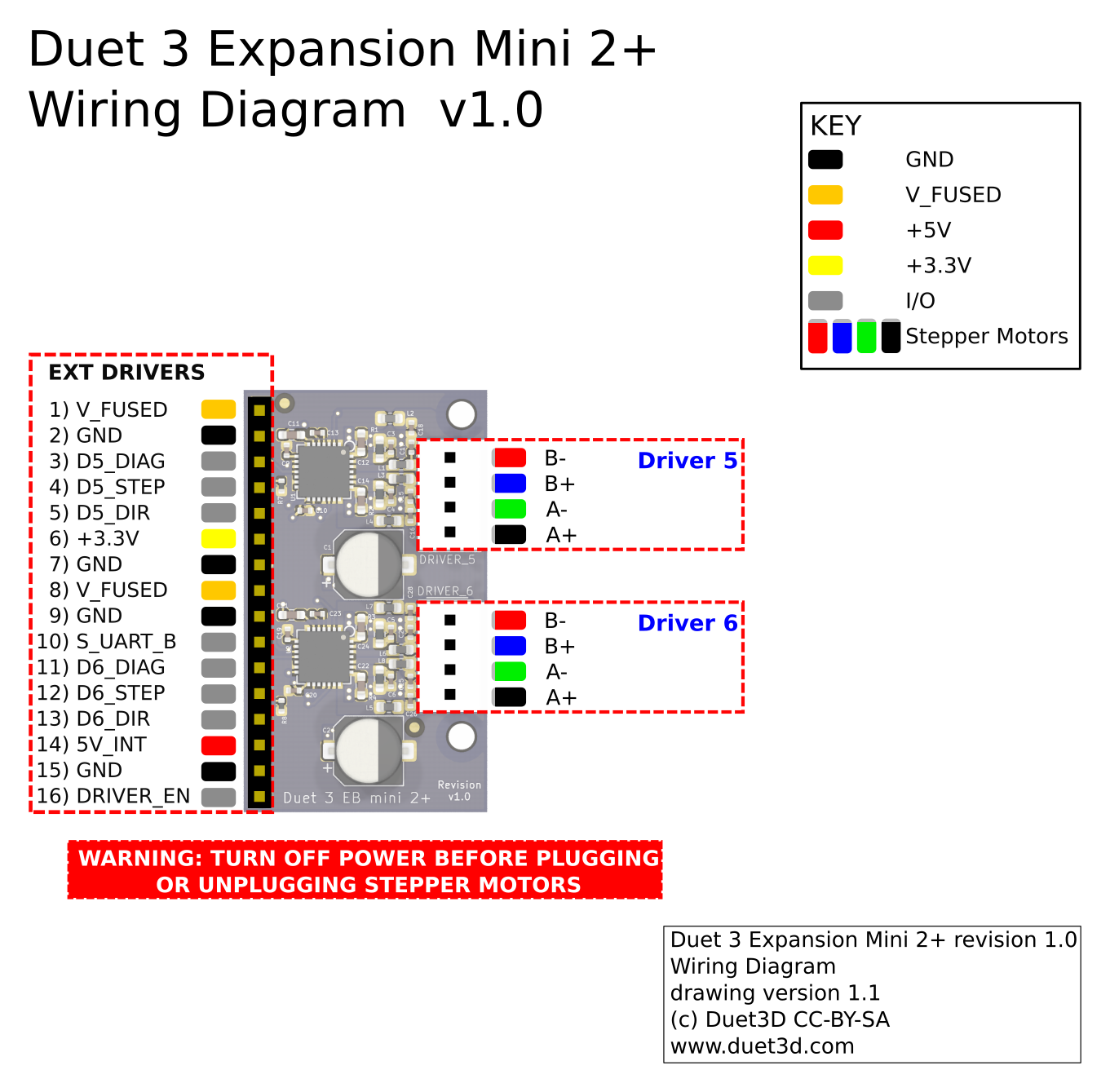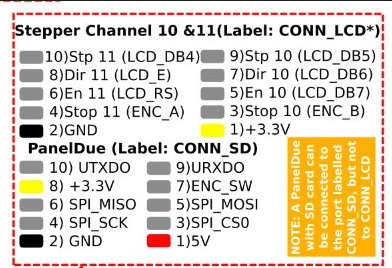Just hoping someone can advise on the given scenario.
I have a Duet 2 Ethernet + DueX5 running a coreXY tool changer beast (slightly larger than usual with 6 different tools and triple axis Z) so have used all the 10 standard breakout stepper drivers ports.
My latest modification is to be an eight filament auto-feeder/changer allowing for lots of colour changes. In order to make it work I need to leverage the last 2 stepper dir/stp pin pairs on the LCD header. Now, I can run those out to a breadboard, pop a couple of stepper drivers in, etc etc or was wondering if I can use the Mini 2+ expansion board.
The board's pin in shown below, specify the standard STEP, DIR, Vcc, GND, etc for each but also a DIAG for each stepper, S_UART_B, and what I assume is a "universal" EN for both stepper drivers (ie pull up/down and it's applied to both steppers)

The pinouts for the last two steppers on Duet 2 (CONN_LCD) are shown in the next image, but are basically the STEP, DIR, EN, GND, and Vcc.

Correct me if I'm wrong, but I could connect the respective STEP & DIR pins, GND, +3.3V, and say one EN pin from the 2x5 pin header on Duet 2 to their mates on the 1x16 header of the Mini, jump the GND across in the connecting cable, add a VIN (regulated/fused) from a suitable power pin and hope things don't let out the magic smoke...
I'm still left with the two DIAG pins and the S_UART_B pin - which, something tells me relate to stall detection and setting appropriate currents, microsteps, etc for the stepper motors. The TMC datasheet says parallel drivers can be sent the same UART settings if the same, so I assume that's the magic there... but the secret magic is how to trigger that, ie send the appropriate values to the TMC registers to set everything. For this I'm hoping that dc42 (or colleague) in his infinite wisdom can advise? I can ignore the DIAG I believe because given the design of the Mini 2 it's only real use must be stall detection.
To make matters more fun I'm also already using the I2C header to control 8 sets of servos and sensors using an SX1509.
Oh, and Merry Christmas everyone!

